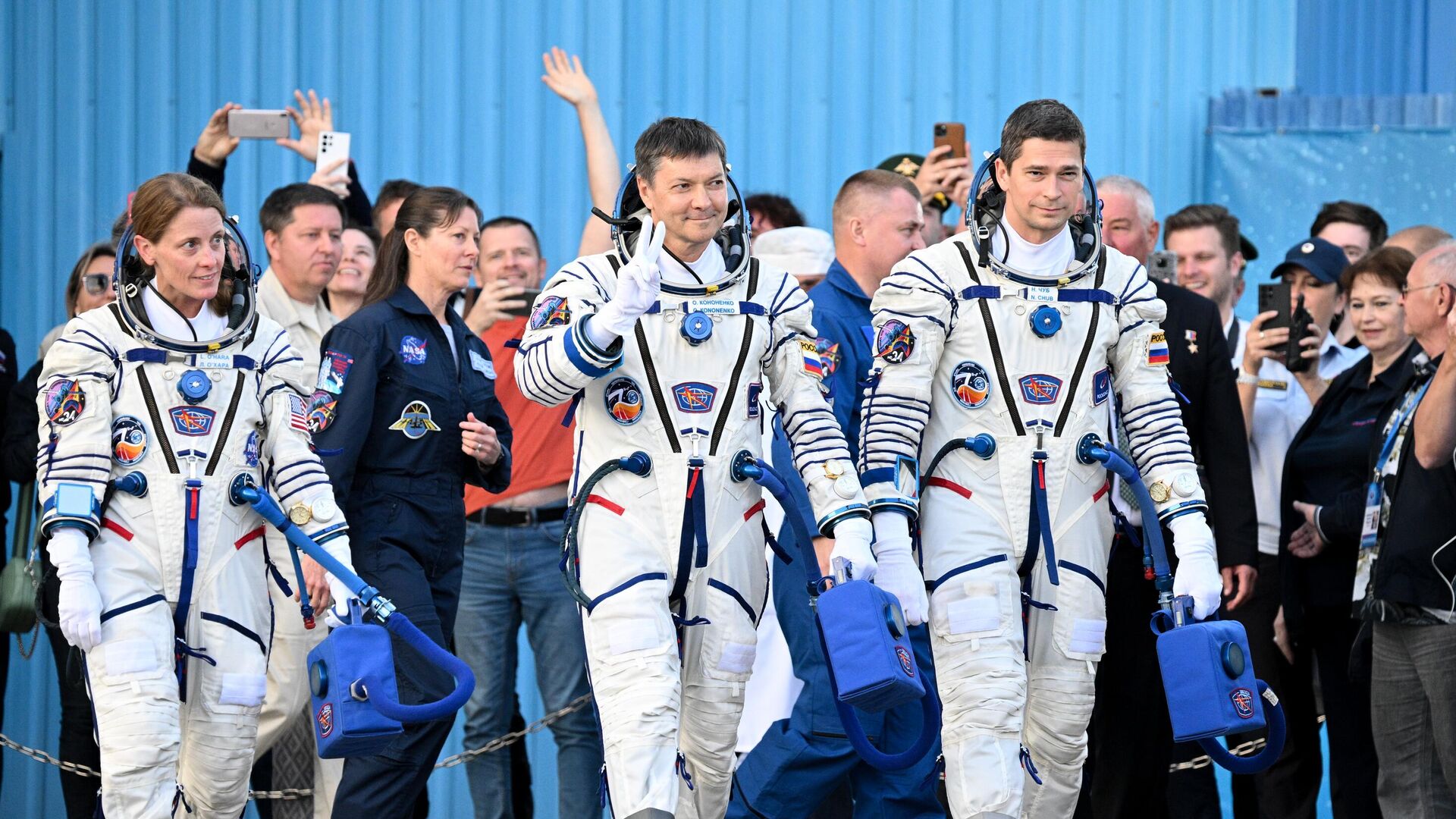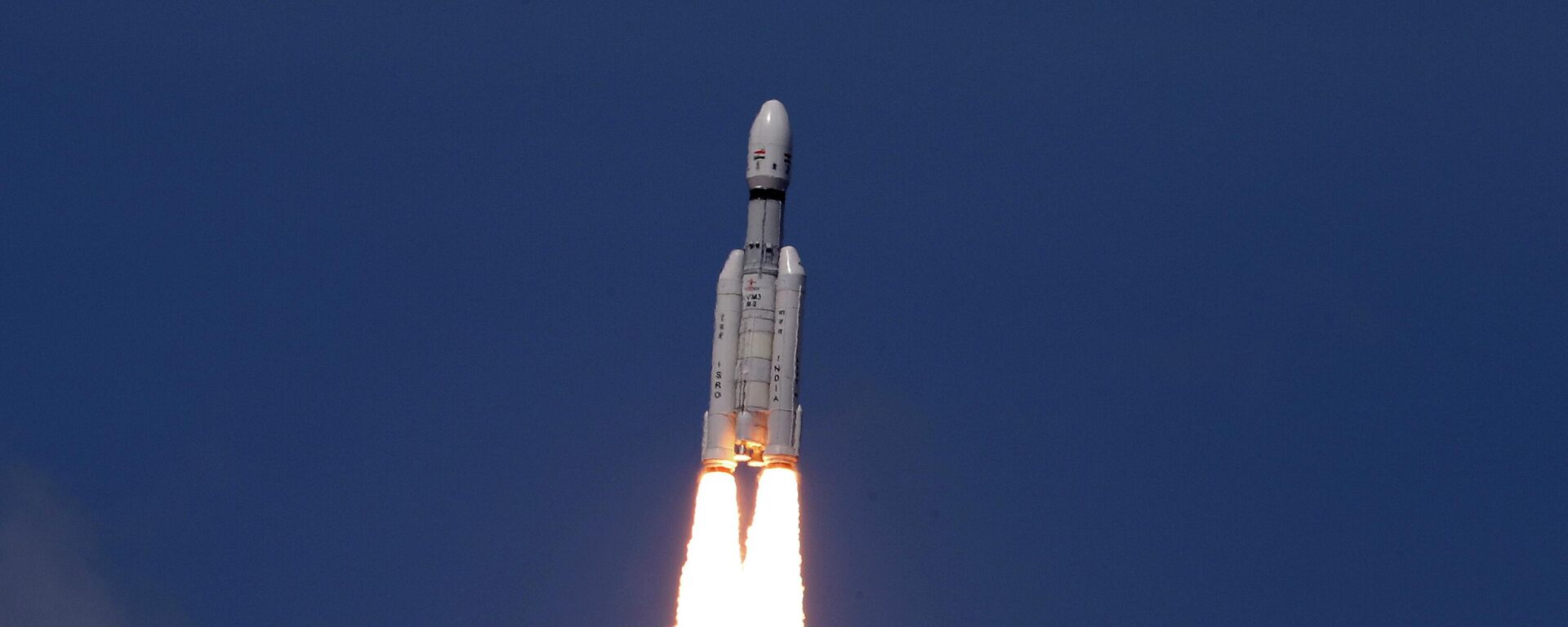https://sputniknews.in/20240115/why-russian-spacesuits-could-be-perfect-fit-for-gaganyaan-mission--6213100.html
Why Russian Spacesuits Could be Perfect Fit for Gaganyaan Mission
Why Russian Spacesuits Could be Perfect Fit for Gaganyaan Mission
Sputnik India
The Gaganyaan mission will dispatch three Indian cosmonauts to the Low Earth Orbit, approximately 400 kilometres above the Earth's surface, where they will remain for three days.
2024-01-15T20:15+0530
2024-01-15T20:15+0530
2024-01-15T20:15+0530
science & tech
russia
india
international space station (iss)
indian space research organisation (isro)
sputnik exclusives
gaganyaan
vyommitra
space satellite
space industry
https://cdn1.img.sputniknews.in/img/07e7/09/0f/4268437_0:0:2935:1651_1920x0_80_0_0_7848de043438f596d5d34222451f636b.jpg
The Indian Space Research Organisation (ISRO), which is currently testing the 2025 Gaganyaan mission's flight, has decided to choose the Russia-made Intra Vehicular Activity (IVA) suits over many national and international rivals.Dr T V Venkateswaran, a scientist at Vigyan Prasar Dept of Science and Technology, when speaking with Sputnik India, said that Russia's enterprise, Zvezda, clinched the contract in 2020."This is such an obvious choice for ISRO to choose the Russian-made spacesuit," Dr Venkateswaran noted.Nathan Eismont, a leading researcher at the Space Research Institute of the Russian Academy of Sciences, told Sputnik that, "India choosing Russia's spacesuit is no surprise as they are the most reliable in the world."Why Choosing Right Spacesuit Important? Dr. Venkateswaran explained that the spacesuit is not just any ordinary fancy attire or a simple costume that one wears."Space is empty, hence, it has huge pressure. For example, a balloon will expand in space and then explode," said Dr Venkateswaran.The temperature in space is as low as -129 degrees Celsius.Spacesuits & Their TestingDr. Venkateswaran stated that there are various types of space suits that can be worn, depending on whether the astronauts are inside the spacecraft or need to walk outside in space. For the Gaganyaan mission, we are specifically referring to the Intra-Vehicular Activity (IVA) slide suit.In November 2019, the ISRO issued a tender inviting applications for the design of a space suit. The contract was awarded to Zvezda, the Russian enterprise currently manufacturing it."[A] spacesuit involves testing at multiple levels, such as, suit performance testing which checks whether body motion and bone joints are properly functioning. Another test is suit port operation; this is to check thermal and vacuum. There are tests to check carbon dioxide levels in the suit, the suit should not accumulate CO2," Dr Venkateswaran explained.Russia Recognised As Global Leader in Space TechnologySpace cooperation has been a critical pillar between India and Russia for decades.During the 1960s, Russia offered supercomputers to India, and later, in the 1990s, cryogenic rocket engine technology. Now, Russia has trained Indian cosmonauts for the country's first crewed space mission, Gaganyaan, among others.Dr. Venkateswaran stressed the significance of Russia's space technology, highlighting its extensive development and global trustworthiness. He noted that when considering Russia's space assets, it becomes evident that its technology has been enhanced over an extended period of time. This has fostered a level of trust not only among Indians but also among Americans, who rely on Russian space technology, the expert noted."If you look at recent history, most of the launches of human beings into space are through Russian spacecraft. Even the US uses Russian assets. After the space shuttle Challenger disaster (the Challenger exploded on 28 January 1986, killing all seven astronauts on board), the US used Russian space facilities from [the] launch to intravehicular and many other things," Dr Venkateswaran pointed out.The expert added that Russian quality regarding the field of space is widely trusted, and when it comes to venturing into unfamiliar territory, it is better not to leave anything to chance.Gaganyaan MissionThe Indian space agency is conducting several rounds of tests before launching the actual mission. After the TV-D1 test flight demonstration, which was carried out in October 2023, the ISRO will also be carrying out a test flight with a robot called 'Vyomitra', a humanoid astronaut, and an uncrewed flight before the crewed mission.
https://sputniknews.in/20231001/space-cooperation-between-india-and-russia-4504446.html
russia
india
international space station (iss)
Sputnik India
feedback.hindi@sputniknews.com
+74956456601
MIA „Rossiya Segodnya“
2024
Deexa Khanduri
https://cdn1.img.sputniknews.in/img/07e6/0c/13/138923_52:0:533:481_100x100_80_0_0_cadf23d341691fc65ff2b22fd1afe584.jpg
Deexa Khanduri
https://cdn1.img.sputniknews.in/img/07e6/0c/13/138923_52:0:533:481_100x100_80_0_0_cadf23d341691fc65ff2b22fd1afe584.jpg
News
en_IN
Sputnik India
feedback.hindi@sputniknews.com
+74956456601
MIA „Rossiya Segodnya“
Sputnik India
feedback.hindi@sputniknews.com
+74956456601
MIA „Rossiya Segodnya“
Deexa Khanduri
https://cdn1.img.sputniknews.in/img/07e6/0c/13/138923_52:0:533:481_100x100_80_0_0_cadf23d341691fc65ff2b22fd1afe584.jpg
india manned program, gaganyaan, isro, space exploration, first space rocket launch, orbital manned mission, india in space, isro news, gaganyaan news, what happened to gaganyaan spacecraft, isro, indian space research organisation, flight test vehicle abort mission-1 (tv d1), crew escape system, when the unmanned flight tests for the mission will start, the test vehicle, fast-acting solid motors, interface adapters, isro facility in bengaluru, indian astronauts, science and technology minister jitendra singh, g1, gaganyaan 1 mission, g2, gaganyaan 2, which contry is providing spacesuit for gaganyaan, space, india-russia space, gaganyaan space suit
india manned program, gaganyaan, isro, space exploration, first space rocket launch, orbital manned mission, india in space, isro news, gaganyaan news, what happened to gaganyaan spacecraft, isro, indian space research organisation, flight test vehicle abort mission-1 (tv d1), crew escape system, when the unmanned flight tests for the mission will start, the test vehicle, fast-acting solid motors, interface adapters, isro facility in bengaluru, indian astronauts, science and technology minister jitendra singh, g1, gaganyaan 1 mission, g2, gaganyaan 2, which contry is providing spacesuit for gaganyaan, space, india-russia space, gaganyaan space suit
Why Russian Spacesuits Could be Perfect Fit for Gaganyaan Mission
Deexa Khanduri
Sputnik correspondent
The Gaganyaan mission will dispatch three Indian cosmonauts to the Low Earth Orbit, approximately 400 kilometres above the Earth's surface, where they will remain for three days.
The
Indian Space Research Organisation (ISRO), which is currently testing the 2025 Gaganyaan mission's flight, has decided to choose the Russia-made
Intra Vehicular Activity (IVA) suits over many national and international rivals.
Dr T V Venkateswaran, a scientist at Vigyan Prasar Dept of Science and Technology, when speaking with Sputnik India, said that Russia's enterprise, Zvezda, clinched the contract in 2020.
"
This is such an obvious choice for ISRO to choose the Russian-made spacesuit," Dr Venkateswaran noted.
Nathan Eismont, a leading researcher at the Space Research Institute of the Russian Academy of Sciences, told Sputnik that, "India choosing Russia's spacesuit is no surprise as they are the most reliable in the world."
Why Choosing Right Spacesuit Important?
Dr. Venkateswaran explained that the spacesuit is not just any ordinary fancy attire or a simple costume that one wears.
"Space is empty, hence, it has huge pressure. For example, a balloon will expand in space and then explode," said Dr Venkateswaran.
"IVA suits need to maintain pressure and save humans from exploding. Space suits supply oxygen, but they also replace the pressure experienced at low altitudes. Above 63,000ft (19km), exposed human tissue swells and bodily fluids like mouth saliva and water in the eyes start to boil," Dr Venkateswaran explained.
The temperature in space is as low as -129 degrees Celsius.
"Astronauts have to wear spacesuits all the time. Space is extremely frigid and filled with dangerous radiation, so without protection, an astronaut would quickly die in space. They also provide air to breathe," Nathan Eismont specified.
Spacesuits & Their Testing
Dr. Venkateswaran stated that there are various types of space suits that can be worn, depending on whether the astronauts are inside the spacecraft or need to walk outside in space. For the Gaganyaan mission, we are specifically referring to the Intra-Vehicular Activity (IVA) slide suit.
In November 2019, the ISRO issued a tender inviting applications for the design of a space suit. The contract was awarded to Zvezda, the Russian enterprise currently manufacturing it.
"[A] spacesuit involves testing at multiple levels, such as, suit performance testing which checks whether body motion and bone joints are properly functioning. Another test is suit port operation; this is to check thermal and vacuum. There are tests to check carbon dioxide levels in the suit, the suit should not accumulate CO2," Dr Venkateswaran explained.
"The Russian spacesuits are already tested, and a new indigenous firm won't be able to do it quickly. Zvezda got a contract in 2020," he said.
Russia Recognised As Global Leader in Space Technology
Space cooperation has been a critical pillar between India and Russia for decades.
During the 1960s, Russia offered supercomputers to India, and later, in the 1990s, cryogenic rocket engine technology. Now, Russia has trained Indian cosmonauts for the country's first crewed space mission, Gaganyaan, among others.
Dr. Venkateswaran stressed the significance of Russia's space technology, highlighting its extensive development and global trustworthiness. He noted that when considering Russia's space assets, it becomes evident that its technology has been enhanced over an extended period of time. This has fostered a level of trust not only among Indians but also among Americans, who rely on Russian space technology, the expert noted.
"If you look at recent history, most of the launches of human beings into space are through Russian spacecraft. Even the US uses Russian assets. After the space shuttle Challenger disaster (the Challenger exploded on 28 January 1986, killing all seven astronauts on board), the US used Russian space facilities from [the] launch to intravehicular and many other things," Dr Venkateswaran pointed out.
The expert added that Russian quality regarding the field of space is widely trusted, and when it comes to venturing into unfamiliar territory, it is better not to leave anything to chance.
The Indian space agency is conducting several rounds of tests before launching the actual mission. After the TV-D1 test flight demonstration, which was carried out in October 2023, the ISRO will also be carrying out a
test flight with a robot called 'Vyomitra', a humanoid astronaut, and an uncrewed flight before the crewed mission.



